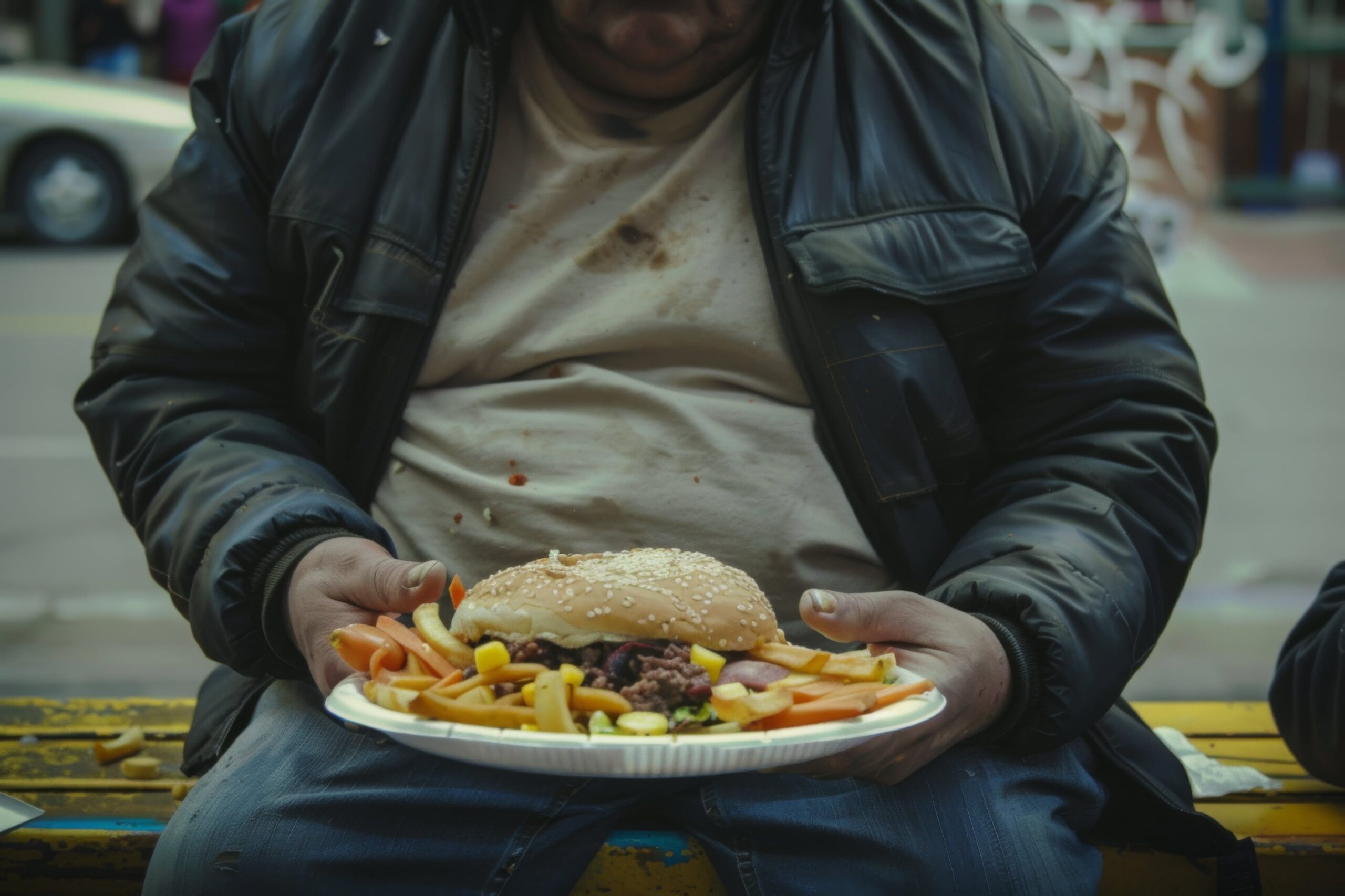It’s an interesting phenomenon that poverty has a high association with obesity. It’s natural to assume that people with low incomes can afford less food, and therefore are not obese. However, in a highly cited study that reviewed more than 3000 U.S. counties, it was found that counties with poverty rates of 35% or more had obesity rates 145% higher than wealthy counties. Researchers have coined this phenomenon the poverty obesity paradox.
Many theories have been proposed about why this paradox occurs.
Lack of Access to Fresh Healthy Food
Purchasing fresh proteins, vegetables, and fruits is sometimes more expensive than buying many processed foods. In fact, in areas where poverty rates are high, grocery stores do not always offer fresh foods, but only lower cost processed foods. Processed foods do not make a balanced diet, and they also often contain high fructose corn syrup, which is a contributor to obesity.
However, some think that it’s a misconception that fresh foods are more expensive, and therefore leads to poor processed food choices. They theorize that the issue stems more from the lack of access to fresh foods in high poverty areas.
Sedentary Lifestyle
A sedentary lifestyle is linked to obesity, and those with low incomes may be sedentary for a variety of reasons. Unemployment is one, with poverty and unemployment having a small correlation, although many people living in poverty work.
Second, areas with greater poverty rates often have fewer sports facilities and parks, and schools in those areas may have few to no sports programs. The price of fitness memberships and exercise equipment are also often out of reach.
Third, many poverty-stricken areas have high violent crime rates, which keeps people from going outside to participate in outdoor physical activities.
Limited Knowledge
People who live in poverty are often less educated and have limited knowledge about nutrition and living a healthy lifestyle. They also may not be aware of the health consequences of obesity and poor nutrition. This may lead to poor food choices.
Low Food Security
One interesting theory links low food security, meaning that people are unsure of how or where they’ll get their next meal, to an instinct to overeat when food is available. Animals have this kind of instinctive survival response, storing more fat in their bodies when food is scarce.
Childhood Obesity and Poverty
Childhood obesity is on the rise, and its correlation with poverty is similar to that of adults, and for the same reasons. Children eat the food their parent or guardian buys, and therefore children living in poverty often have a diet that consists mostly of processed foods.
They also may be sedentary for reasons including the lack of parks and sports facilities in impoverished areas and being kept inside due to the prevalence of violent crime.
Childhood obesity generally leads to adult obesity. Data shows that about 80% of adolescents with obesity will still be obese in adulthood.
Health Consequences of Obesity
Obesity is a factor in the development of many conditions that lead to more than 3 million deaths per year worldwide. Obesity also contributes to many chronic conditions that can cause disability and diminished quality of life.
Some of the conditions related to obesity include:
- Several types of cancer
- Type 2 diabetes
- Hypertension
- Stroke
- Coronary Artery Disease
- Congestive Heart Failure
- Asthma
- Chronic back pain
- Osteoarthritis
- Pulmonary embolism
- Gallbladder disease
It’s also theorized that obesity can lead to mental health disorders, some due to the stigma that exists around obesity. Some of these mental health disorders and effects include low self-esteem and mood disorders.
Additionally, obese people may suffer from discrimination and ridicule from others, which can lead to mental health disorders such as depression.
It’s also important to note that childhood obesity, particularly when it starts at an early age, is linked to reduced life expectancy. One worldwide study found that early childhood obesity cut life expectancy by half.
Solutions to the Poverty-Obesity Link
Many programs at federal, state, and local levels are in place in an effort to reduce obesity among low-income people, particularly for children. At the federal level, programs like the Supplemental Nutrition Program for Women, Infants, and Children (WIC), and farm-to-education programs are designed to make healthy, nutritious, and affordable food available to low-income populations.
Other programs aim to provide nutrition and fitness education and to promote physical activity.
At a community grassroots level, organizations are increasing fresh food availability with community vegetable gardens and food banks that offer fresh foods. Others are offering physical activity programs and access to fitness facilities.
At an individual level, you can volunteer for these community organizations, donate fresh foods to food banks, or offer financial support for programs that address obesity issues.
In Closing
Obesity is a problem that must be addressed, particularly in low-income areas. By doing so, lives will be improved, people will live longer, and the stress on health systems and disability programs will be reduced. Obesity is a problem that can be solved with education, and by providing access to healthy foods and physical activity programs in areas where poverty rates are high. Everyone can play a role in these solutions.

